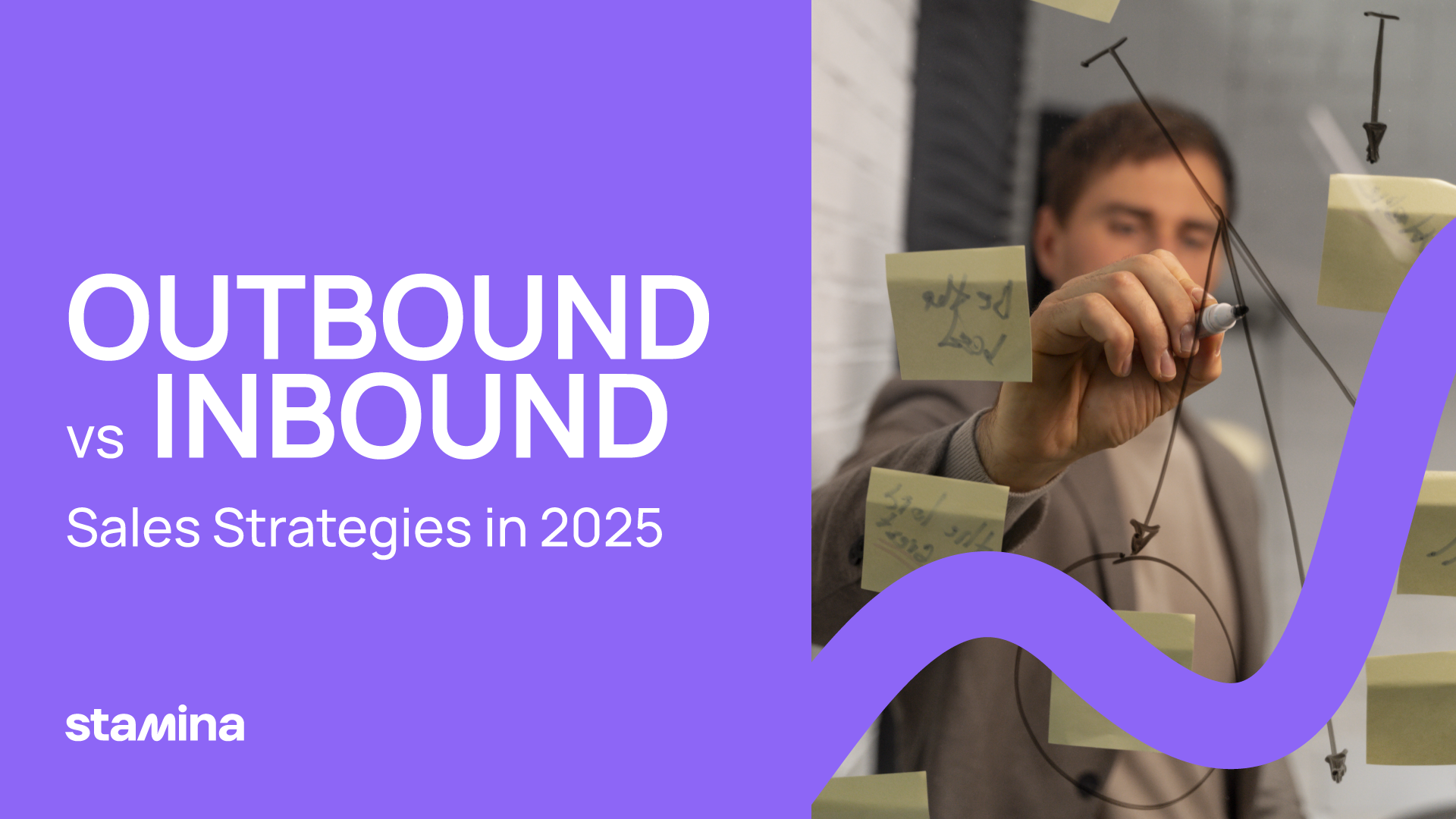Outbound vs. Inbound Sales Strategies in 2025: Which One is Best For Your Business?

There was a time when selling was merely about the hard sell: reaching out to customers with cold calling or emails.
Today, the process of buying has changed. The buyers are more informed about the markets and products or services they are looking for.
And guess what? Businesses often face a difficult question: whether to chase leads, attract them, or maybe both.
Here is where outbound and inbound sales strategies come in. Each approach has its advantages.
Some companies rely on outbound sales, reaching out directly through calls, emails, or LinkedIn messages. Others prefer inbound sales, where customers find them.
But which one is right for you?
Let’s explore.
What Is Outbound Sales?
Outbound sales is a proactive sales approach where a sales representative directly initiates contact with prospects. The aim is to spark interest and guide potential customers through the sales funnel, even if they haven't shown prior interest.
The outbound sales strategy is often employed in B2B sales, particularly in industries with lengthy sales cycles or high-priced services.
The most common outbound sales tactics include:
-
Cold Calling
Cold calling is the process of reaching out directly to prospects via phone. It is one of the oldest and most common ways of sales prospecting.
-
Cold Emailing
Cold emailing involves sending targeted, personalized messages to prospects. This outreach method is preferred by customers over cold calling. Studies indicate that personalized cold emails achieve an 18% response rate, demonstrating that cold emailing efforts are effective.
-
Social Selling
Social selling strategy involves reaching out to prospects via platforms like LinkedIn, X (formerly Twitter), and Facebook.
Platforms like Apollo.io, ZoomInfo, and LinkedIn Sales Navigator help identify leads efficiently.
Benefits of the outbound sales strategy include:
-
Controlling the lead generation process.
-
Reaching directly decision-makers using targeted campaigns.
-
Measurable and predictable sales outreach processes.
However, you need to consider some drawbacks when considering the sales outbound strategy:
-
Lower response and conversion rates compared to inbound.
-
Time-consuming processes that require intensive resources.
-
Higher prospect resistance with cold outreach.
What Is Inbound Sales?
The inbound sales strategy is used for attracting potential customers who are already in need of the solutions you offer. They are already searching for the solutions, and your task is to make your brand appear in their search and be attractive enough for them to solve their problem.
This approach is content-driven, backed with SEO, branding, and online engagement.
The key idea of inbound sales? Instead of reaching out to leads, you make them come to you.
The commonly used inbound sales channels include:
-
Content Marketing
Content marketing is key for inbound sales. It helps to guide and educate your potential customers through blogs, eBooks, videos, and case studies.
-
SEO (Search Engine Optimization)
SEO or Search Engine Optimization is another key inbound sales technique that helps to optimize your website to rank higher in search results. SEO optimization includes on-page and off-page optimization, keyword research, backlink building, and technical SEO.
The best part is that the combination of all these methods helps you rank, and the traffic keeps coming without ad spend.
-
Paid Ads
Paid ads can significantly enhance your SEO and other inbound strategies by putting your content or offers directly in front of your target audience. Done right, PPC drives high-intent traffic to landing pages that convert. The common PPC channels include Google Ads, Meta Ads, LinkedIn Ads, YouTube Ads, and more.
-
Social Media Marketing
This is where the relationship between the business and the potential customer begins.
Social media lets brands build trust, share stories, and engage in real-time with their audience. It’s one of the best inbound channels for brand awareness and community engagement.
You can use channels like Facebook, LinkedIn, X (formerly Twitter), and TikTok. Over the last years, other effective means have evolved, including Podcasting, Email Newsletters, webinars, and virtual events.
The benefits of the inbound sales strategy include:
-
Long-term brand trust.
-
Higher ROI over time.
However, you need to consider several challenges, like:
-
Not immediate results. For example, it may require from 6 months to up to a year to see the results of an SEO strategy.
-
Competitive market.
-
Demand for high-quality content.
Tools To Use For Outbound and Inbound Sales Strategies
Choosing the right tools can make or break your strategy. Here are some go-to platforms for each approach:
Outbound Sales Tools
These platforms can help you automate your outbound sales efforts and take your strategy to the next level.
Apollo.io
Lead databases and contact enrichment.
Lemlist
Cold email automation with tracking.
Calendly
Simplified meeting booking for prospects.
LinkedIn Sales Navigator
B2B targeting and engagement.
Inbound Sales Tools
These are the most commonly used inbound sales tools that are proven to be effective for businesses of all sizes, including Fortune 500 companies.
Ahrefs
SEO research and content strategy.
Google Ads
Paid ad management.
Hootsuite
Social media scheduling and analytics.
Which Sales Strategy Should You Choose?
The choice between the inbound and outbound sales strategies mostly depends on your business model and your goals.
However, instead of choosing either, most businesses today successfully combine the two strategies to achieve more results.
-
Outbound can identify and initiate contact with new prospects.
-
Inbound can nurture them through personalized content and automation until they’re ready to convert.
In short, outbound is your “hunt” strategy, and inbound is your “harvest” strategy.
Together, they form a feedback loop: outbound outreach drives traffic to inbound content, while inbound insights help fine-tune outbound targeting.
You may wonder how to combine the two strategies without time-consuming and resource-intensive processes. The answer is simple: by using a CRM system that lets you use the strategies in a single platform. A system like that will let you:
-
Reach out to prospects using different channels via a single platform.
-
Follow up with inbound leads via email sequences or retargeting.
-
Sales and marketing team collaboration with shared activity, notes, and emails.
-
Real-time performance metrics in a single platform.
Conclusion
So, which sales strategy to choose?
Consider your business size, your audience, your business model, and your main business goals.
To maximize the results, it is recommended to use both strategies.
With inbound sales, the potential customers will easily find you, and you can turn them from prospects into customers.
However, there is still no consensus on which strategy to start.
Start small, test both channels, and use a CRM system to align your sales and marketing efforts. Over time, you’ll discover the right mix that drives consistent growth for your business.
Subscribe to our Newsletter














